Seidenberg was injured in the first period on Tuesday and it appears he will make way for Kevan Miller tonight. Seidenberg is usually good for five goals and 20 assists per season, but so far this year he has no goals and six assists in 21 games.
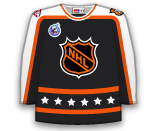
Seidenberg was injured in the first period on Tuesday and it appears he will make way for Kevan Miller tonight. Seidenberg is usually good for five goals and 20 assists per season, but so far this year he has no goals and six assists in 21 games.

Bickell was injured in the first period of Tuesday's contest with the Avalanche. Bickell has not been the player he was in the 2013 playoffs, tallying five goals and one assist in 22 games.
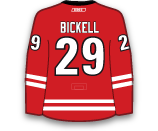
Coach Claude Julien said after the 2-1 victory that it was "obviously a lower body injury where he couldn't come back" and that Seidenberg would be evaluated after the team returned to Boston. In 20 games this season, Seidenberg has six assists and a plus-10 rating. He has missed five games in the previous three seasons. Monitor his status following Thursday's morning skate for an injury update.

Gionta twisted his ankle in practice on Tuesday but is good-to-go tonight. Gionta is not fantasy relevant, he has one assist in 19 games.
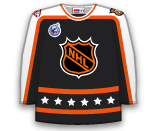
Duchene will miss Thursday's game vs. Phoenix and Saturday against Los Angeles. He could return next Wednesday when the Avalanche take on the Blues.

Stars coach Lindy Ruff did not have much of an update after practice. “I know he got hit in the face and he’s going to be evaluated,” Ruff said. “He hit him pretty hard, so we are concerned there might be some damage.” At this point, Chiasson’s status for Thursday’s game against the New York Rangers at is up in the air.

Backstrom would be eligible to return whenever he is healthy. There has been no word on how Backstrom is feeling or how serious his concussion is. Consider him out indefinitely as the Wild will continue to roll with Josh Harding as their starter and Darcy Kuemper as his backup.
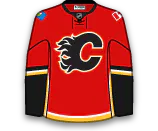
Marleau was reportedly fine after the accident and his presence on the ice this morning confirmed that. He is good to go for Thursday vs. Tampa Bay.
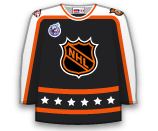
Burns has missed 13 games, but could be back tomorrow. We have been here before with Burns and this injury - it looks like he is close and then he doesn't play. I won't get anyone's hopes up, monitor his status following tomorrow's morning skate.

The veteran centre will miss his 12th straight game when the Ducks take on the Devils tonight. He has practice for several consecutive days so his return is near. The Ducks next play on Friday against Tampa Bay.
Whitney has missed the last three games with an upper-body injury that he suffered on November 9. He is on IR retroactive to the 9th, which means he is eligible to return when he is healthy. The 41-year-old veteran has one goal and seven assists in 17 games this season. Monitor his status following Thursday's gameday skate.
Dubinsky left Tuesday's game with a foot injury and did not return. He played just 12:30 and did not record a point for the fourth straight contest. Recently recalled Jack Skille will replace Dubinsky in the lineup.
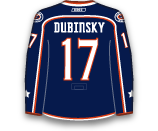
"He just tweaked a little something last night, nothing serious," said head coach Ted Nolan. Ennis scored a goal in 14:44 TOI last night and now has goals in back-to-back games. He has four goals and eight points in 23 games.

Koivu has missed the last 11 games after being concussed on October 27. Koivu is in the twilight of his career and is not really fantasy relevant in any capacity right now. He has just two goals and one assist in 12 games.
Perreault returned to the lineup on Monday, after missing a game with an illness, but in a third-line capacity. In practice this morning it appears as if he will return to the second line for tonight's matchup with the Devils. After 14 points in his first 15 games, Perrault has failed to register a point in his last six games.

Weiss will miss his fifth straight game. He has been disappointing in his short time in Detroit, recording just two goals and one assist in 17 games. Monitor his status prior to Saturday's game with the Senators.
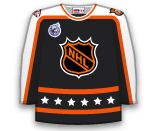
Berglund will miss his third straight game Thursday. Tough break because the Blues could have used his big-body against a big, strong Bruins team. Berglund scored 17 goals in 48 games last season but has just one goal and six points in 18 games this season.

Quick will likely be out until Christmas, which means Ben Scrivens will serve as a viable fantasy option for another month. Scrivens is 4-0-0 with a 1.00 GAA and .963 SV% with two shutouts since becoming the Kings starter. For those of you who picked Scrivens up, he is a legit high-end number-2 fantasy backstop option with Quick out. This is a tough break for Quick, because this could hurt his chances of making Team U.S.A's Olympic team.

DeKeyser was injured in the first period of Tuesday's contest following a hit from Patric Hornqvist. The original diagnosis was 1-2 weeks, but he was re-evaluated this morning and the doctors said he will miss 3-6 weeks. Placement on LTIR means he is out for a minimum of 10 games and 24 days. This is a tough break for a young defenseman who was playing very well in his first full season. DeKeyser had two goals and six assists in his last 11 games.
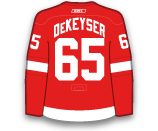
Malkin was given a maintenance day on Tuesday, but was fully expected to suit up tonight. It appears that he will dress and skate with James Neal and Pascal Dupuis vs. Washington. Malkin has only three goals this season but his 17 assists is fourth in the NHL. He has 10 assists in his last eight games.

The NHL injury report is updated daily so that you can see the latest injury news ahead of puck drop in any of today’s matchups. Seeing timely updates to the NHL injury report can make a major impact on your daily fantasy sports picks and wagers on a particular game. All information provided on the NHL injury report is provided directly by the NHL and each respective franchise to ensure accuracy.
While the minimum amount of time spent on the injured reserve list is seven calendar days, there is no maximum amount of time that a player can be placed on the injured reserve list. If a player is set to be sidelined for longer than 24 calendar days or 10 NHL games, then a club may opt to place them on the long-term injured reserve instead. This allows franchises with the ability to exceed the salary cap while a player is placed on this reserve list.
No injury recovery timeline is the same as another as there are several factors that go into the rehab process for a player being affected by injury. Factors include but are not limited to, injury severity, player injury/medical history, age, as well as the location of the injury. Some injuries are able to clear up in a matter of days, while others may take an athlete out of action for the entirety of a season.